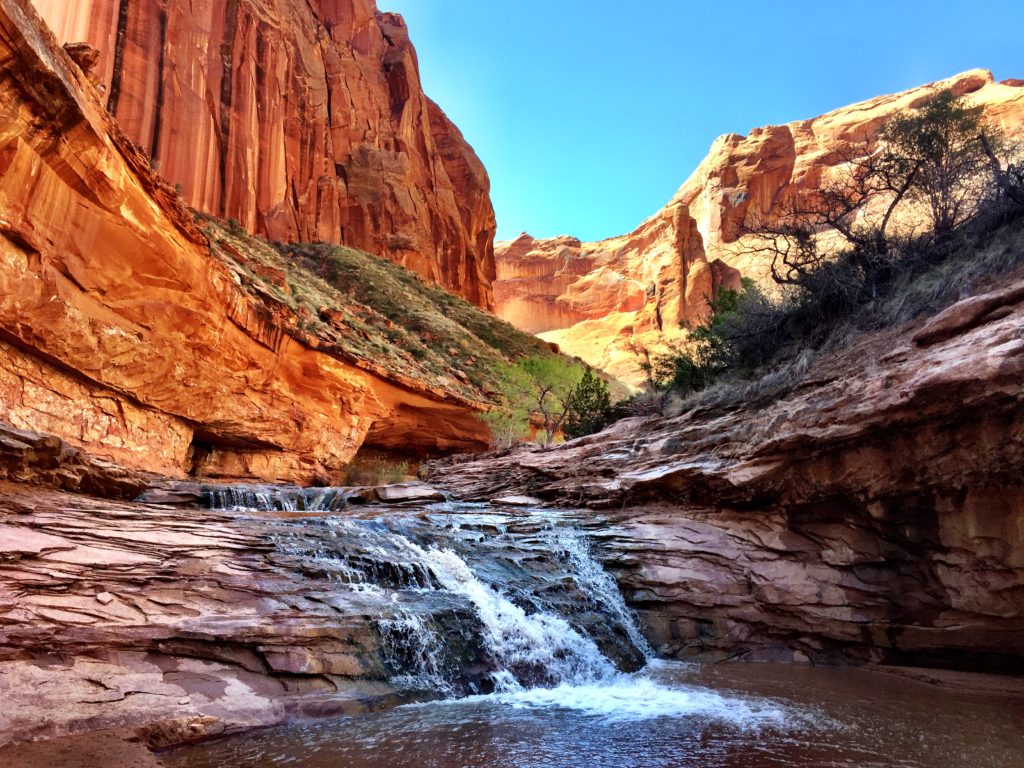Conflicted Landscapes

David Nye is one of our top historians of technology and he has a new book out on American landscapes and the greater political division over them. This is a rather lengthy excerpt that I found really quite interesting. One of the stories of the political history of environmentalism is that we had this incredible bipartisanship on environmental legislation in the 60s and early 70s (which is why Richard Nixon should get zero credit for signing environmental legislation he didn’t care about and that passed the House 412-3) and then by the 80s, it became extremely partisan and that has only increased to the present. He credits the rise of creationism as central to this, which I had not thought of before, or at least not in this way. An excerpt of the excerpt:
Since World War II the relationships between these conceptions have shifted dramatically; unifying them has become even more difficult in recent decades. Today, many Americans worry about global warming, species extinction, and pollution. They question highway projects, new pipelines, strip mining, reliance on fossil fuels, and the location of waste disposal sites. At the same time, creationists have become more numerous, particularly in the Southwest. Their biblical sense of history explains the United States in terms of Manifest Destiny and American exceptionalism.
When President Ronald Reagan ran for reelection in 1984, his campaign slogan declared “It’s Morning in America.” It suggested that the United States was just beginning, and that most of its second creation lay ahead. This message appealed to his creationist supporters, as did Reagan’s declaration that both evolution and creation theory ought to be taught in public schools. America’s second creation acquired greater resonance if human history began only a few thousand years ago. From the 1930s to the 1970s, the Bureau of Reclamation’s projects, such as Glen Canyon Dam, had been justified by the utilitarian benefits of hydropower, flood prevention, irrigation, and recreational boating. But some creationists saw these projects as the unfolding of American destiny.
Even as creationism became more common, support for wilderness also grew. The wilderness movement relied on a scientific approach to landscape that called attention to all plants, birds, insects, and animals, rather than presenting human beings as a non-evolutionary special creation of God. Scientific investigation showed the complexity of landscape, documented the rising rate of species extinction, and gathered evidence of global warming. The evidence undermined the possibility of wilderness itself. As the German sociologist Ulrich Beck concluded, “Anyone who continues to speak of nature as non-society is speaking in terms from a different century, which no longer capture our reality. In nature, we are concerned today with a highly synthetic product everywhere, an artificial ‘nature.’ Not a hair or a crumb of it is still ‘natural,’ if ‘natural’ means nature being left to itself.” Historians, literary critics, and anthropologists reached similar conclusions. If wilderness lacked credibility, however, to environmentalists, a designated wilderness was clearly preferable to subjecting any site to uranium mining, oil extraction, or nuclear tests.
The clash of creationism with science had philosophical implications and political consequences. Consider the philosophical implications first. Diametrically opposed views could be attached to the natural sublime, depending upon whether one believed in creationism or evolutionary science. Since Jefferson’s era, some Americans have seen natural bridges and other natural wonders as proof of the existence of God. A scientific understanding of the same spectacular landscapes did not detract from their sublimity but saw in them the proof of geological theory, the immensity of time, and the insignificance of human history. Creationists and evolutionists agreed that these sites were sublime, but their understandings of them were incompatible.
Politically, tensions between different conceptions of the land sharpened conflicts over dams, irrigation, tourism, mining, atomic testing, waste storage, and wilderness. For generations, Americans alternated among several land ethics, depending upon audience and occasion. Every president celebrated the utilitarian development of natural resources. Every president also praised the creation of public parks and other pastoral landscapes. And after 1964 every president designated wilderness areas. Lyndon Johnson and his successor, Richard Nixon, each set aside millions of acres to remain unspoiled in perpetuity, and the presidents after them added more. Politicians had an appropriate rhetoric for each situation.
Makes quite a bit of sense to me.


